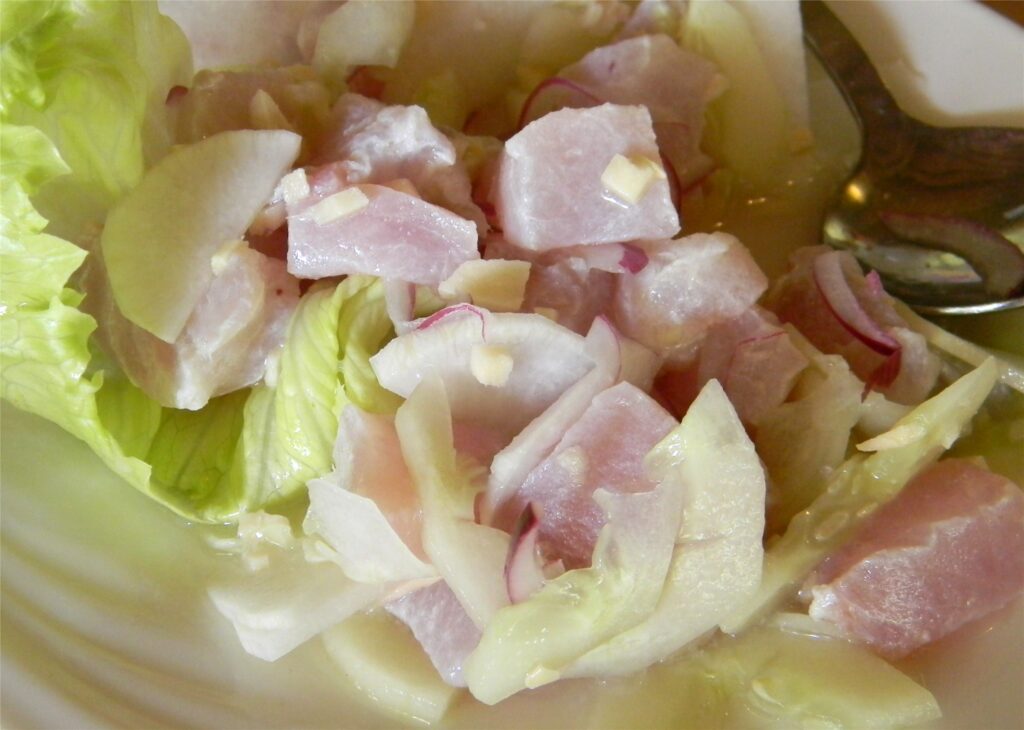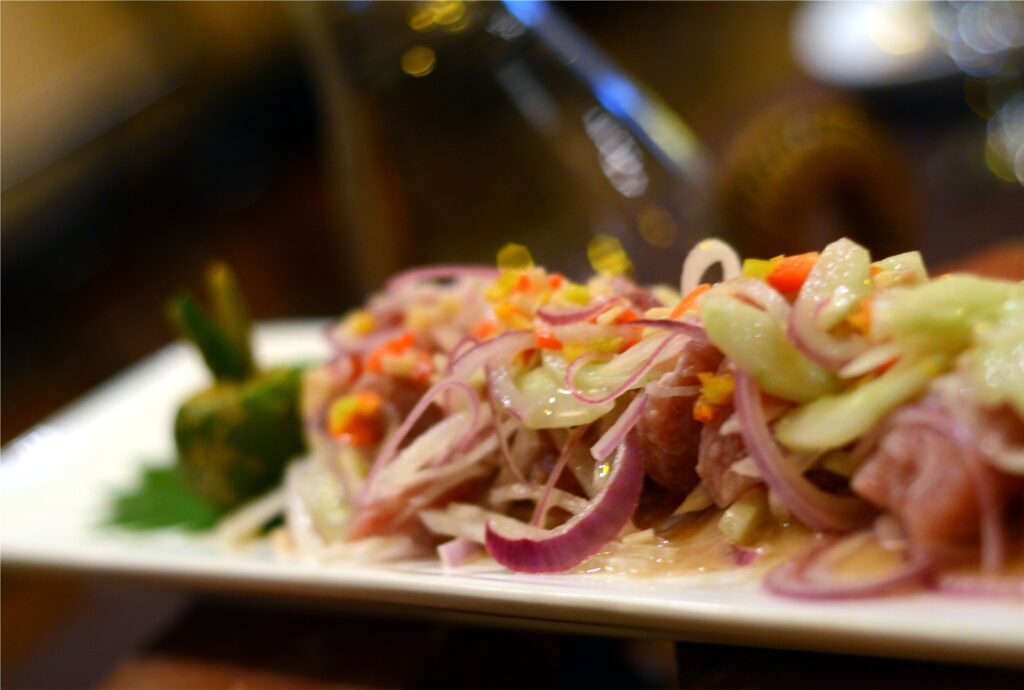Text and Photos by Henrylito D. Tacio
I couldn’t remember now when I started eating kinilaw, whether I liked it or not. But today, it is one of my favorite viands. Every time I returned home from a trip abroad, I immediately asked for kinilaw as one of those served on the table.
I really don’t understand what makes kinilaw so delicious and mouth-watering. Maybe it’s because of the fresh fish, the ingredients, the smell, or all of them?
Authors Edilberto Alegre and the late Doreen Fernandez thoroughly explored kinilaw in their definitive book. They found that long before the Spaniards came, we were already making kinilaw.
Kinilaw is one dish that unites us all – from North to South (“mula Aparri hanggang Jolo”). Each of us has our own version of kinilaw. Thus, we can surmise that kinilaw, like adobo, is a Filipino thing.
Kinilaw means to “cook” in vinegar. It’s not really cooking per se since there is no heat involved. That’s why the term “liquid fire” has been invented for kinilaw. Soaking fish or some other seafood in a strong vinegar solution turns the meat opaque and gives it a texture of having been cooked.
Why do Filipinos love curing fish and meat? According to some historians, there were no refrigerators or freezers in the past. Filipinos used vinegar and salt as preservatives. Curiously enough, these preservatives are also used in many of our traditional dishes like adobo, tapa, and kinilaw.
“Kinilaw is a delicious raw fish dish having its roots in the Philippines,” Wikipedia reports. “The culture, sensuality, history, art, and the essence of the kinilaw dish is really tremendous. This dish features shellfish, fish, meat, crustaceans, fruits, vegetables, and other seafood. You will find it really delightful because it constitutes an amazing taste of sweet and sour vinegar.
“You will find that this dish is so fresh and perfect for every kind of party whether it is an anniversary party, a birthday party or official gathering. There are different ways to prepare the dish because it involves an individual’s creativity. You can add various yummy ingredients to make it more delicious and serve it with sliced squid.”

Wikipedia describes kinilaw as a “great Filipino dish,” which is popular in many restaurants and bars. It goes on to say: “You can prepare an awesome main course dish or just enjoy salad to feel very satisfied. Kinilaw is a very light and fresh dish and you do not feel very heavy after eating it. It is a great example of Asian culture that encompasses healthy eating habits. The culture of Filipino explains that you must eat according to your body to enjoy various flavors in your life. A variety of fishes can be used to prepare kinilaw dishes such as bariles (tuna), tangigue (sea bass), lapu-lapu (grouper), talakitok (cavalla) and many more. Apart from the wide variety of fish available, you can also use an assortment of spices and make it just amazing.”
Kinilaw is a perfect appetizer as it goes wonderful with any drink or mango smoothie. It can be taken as a main course with rice, being really fantastic and delicious. No dish is best in this world because there are some chances of improvements; thus, you can use many ingredients to make the dish better.
Just a reminder if you prepare your own kinilaw: “(It) should never sit in vinegar too long. And whenever possible, use calamansi instead of vinegar for a lighter, fresher and less acidic dish,” advised Christopher Park of Waterfront Manila Pavilion Hotel and Casino.
For those who want to make their own fresh kinilaw, here are the ingredients you need:
- 2.5 pounds choice of raw fish (tuna is most popular, but you can use other fish).
- One cup vinegar.
- A combination of calamansi, lemon, and lime (ideally, 3 calamansi, half a lemon, and half a lime, but 5 pieces or just one of the citrus fruit will work, too), one medium red onion, sliced small.
- Two medium tomatoes, cubed.
- One medium piece of ginger crushed.
- One clove garlic, minced.
- One tablespoon salt.
- Four small hot peppers (optional).
Here’s what you need to do:
1. Clean and cut fish into small cubes. Rinse the fish in water and drain.
2. Flash rinse the fish quickly in one-half cup vinegar and drain.
3. Add final one-half cup vinegar to the fish. Squeeze the citrus over the mix.
4. Add onion, tomatoes, ginger, garlic, and salt (and peppers if you want; some people add hot pepper at this point). Mix gently, scooping bottom to top; this prevents the crushing of the fish and tomatoes.
5. Leave in the fridge for at least an hour before serving.
While it is more common to use red onions for making kinilaw, I like the sweet white onions as they give a wonderful contrast to the sourness of the vinegar and calamansi juice. Here’s a tip: When eating kinilaw, remember to eat each piece of fish with a few pieces of onions as well. It makes the experience of eating kinilaw really memorable.

“If you want to enjoy kinilaw,” Wikipedia pointed out, “keep in mind that there are many versions and preparation methods may vary from one location to another. You can visit some popular restaurants to experience kinilaw or take home a recipe book along with essential ingredients and start preparing. This is an ultimate dish that you can enjoy with your family members and friends.”
Enjoy eating!

